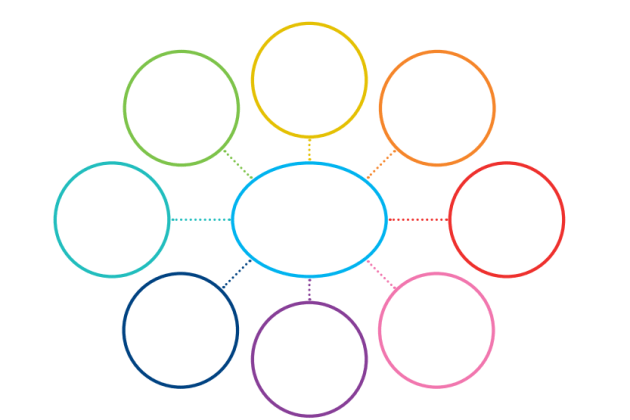I used to spend a lot of time Googling what to put in my witch journal. (Other people may call it a Book of Shadows or a Grimoire, neither of which feel right for me.) It was a very fun activity for me, but social media had me thinking it was incomplete. I was motivated to work on it, but I didn’t know what to include. Recently, however, I realized that a witch journal should be as unique as the person writing it, and I set out to figure out how to achieve that. In this post I will share my method with you!
Here is your complete guide to making a witch journal, Book of Shadows, or grimoire that:
- you will realistically use regularly
- is unique to you
- is perfect for your personal practice
What Notebook Should I Get?
Before you start a witch journal, Book of Shadows, or grimoire, you have to choose a notebook. Having tried both analog and digital options, I prefer analog for a few reasons. One of those reasons is that it’s a lot of effort to copy down something someone else has written, making you more motivated to include your personal insights instead. (There’s nothing wrong, of course, with writing down stuff like “Crystals That Can’t Be Exposed to Water” or “Fire Safety Rules,” but in my opinion, that shouldn’t be the bulk of your witch journal.)
I highly recommend the Artist’s Loft dot grid journal from Michael’s. They are sturdy, less than $10, and last me at least a few months. Recently, they have been including space for an index as well as numbered pages. They also often have a pocket on the back inside cover.
The only criterion for choosing your notebook is to get something you WANT to write in– not something so beautiful you don’t even want to touch it. For me, that is something that looks nice but is not extremely fancy. Your pick might be a composition notebook or spiral-bound with some stickers on the cover– it’s really up to you! Get as messy or as aesthetic as you please.
How to Organize Your Witchcraft Journal
To keep everything accessible, I use the Bullet Journal method in my witchcraft journal. This means that the first few pages are an index, and (with a few exceptions) pages are not set aside or divided up into sections. When you need to use a new page, just use the next numbered one. Therefore, tarot journaling (for example) might be on pages 4 and 8, with notes from a book on page 5 and 11, art on page 6, etc. If you want to, you can color-code different subjects in a variety of ways. I use markers for the headers in corresponding colors, for example, but you could also use circular stickers on the edges of pages or anything else you can think of.
What To Put In Your Journal
Witchcraft is the only endeavor where people tell you to copy down a ton of stuff you can easily Google. Have you noticed that?
Instead of writing pages of one-word correspondence lists that don’t mean anything to you yet, write about your unique spiritual journey.
I recommend starting with a daily witchcraft-focused journal session and expanding outwards from there. It often helps to think on the small scale. For example, you might write about what you thought about spiritually that day, the rituals or spells you did, offerings you gave to spirits, books you read, tarot readings you gave to friends, signs you saw, etc. You might be tempted to write a manifesto on your practice right off the bat– I do recommend doing that at some point, but my advice would be to start out as small-scale as possible. Just write about your day, from a witchcraft perspective. And then keep doing it.
This will naturally expand into other things that are relevant to your practice: wishlists, artwork, tarot/oracle reference charts, correspondences for crystals you own, plant profiles, offering logs, book notes (lots of book notes!), recipes, etc. The sky’s the limit!
I have had at least three witch journals in the last 15 years, and the daily witchcraft-focused journaling still forms the basis of my practice. It’s also very useful to see my evolution into the witch I am today– for example, I first write about Baba Yaga on April 7, meaning I have been researching and working tentatively with her for about 6 months at the time of this writing. That is useful information!
What About the Aesthetics?
I run into a lot of people who are hung up on the aesthetics of their journals, so my first instinct is to say, to hell with the aesthetics! Let your witch journal be as messy as you want!
On the other hand, some of you reading this may be art witches or just people who genuinely like to decorate their journals and planners.
I am not artistic at all, but I have started doing marker drawings and stickers and sometimes fancy paper, but only in a way that is relevant to my actual practice. For example, my current witch journal includes a drawing of amethyst (one of my favorite crystals) and a half-open folding knife (a symbol from one of my favorite tarot cards).
Conclusion
I hope this helped you move towards creating a witch journal, Book of Shadows, or grimoire that is personal, unique, relevant to your practice, and realistic.
Let me know any thoughts you have in the comments!







